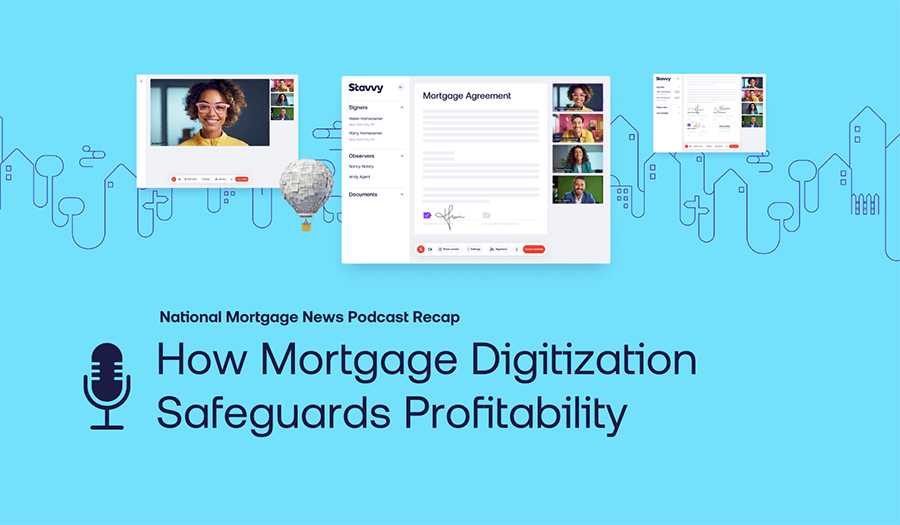At first, this story will not sound like a big deal, but I think that’s the point. Sometimes the best innovation comes from making something menial easier to do.
This is the tale of the missing 529 investment account, which you’ll learn isn’t really a tale at all because it’s true, and it happened to me just this year.
Over the summer, my wife and I decided to open a 529 investment account for our daughter’s college education. With traffic, our financial advisor’s office is located 30-45 minutes away. Not too far, but not terribly convenient either.
The process began like any other financial transaction, with a face-to-face meeting to discuss our needs. Once we aligned on our goals and the next steps, our advisor sent us a FedEx package with the required paperwork. The package included a dozen fluorescent sticky notes marking off the signature and initial pages and a folded, pre-paid FedEx envelope so that we could return the completed documents to their office for processing.
As I mentioned earlier, not a big deal. Right? This is pretty standard practice.
The package sat on my desk for a day or two, as these things typically do. Quickly, days rolled into weeks. About a month later, I saw the package on my desk and was reminded that it required my attention. Naturally, I felt terrible that the task had slipped my mind. I had the best intentions, but other areas of my life needed my attention.
Then, another few weeks came and went.
Eventually, I found the time to fill out the paperwork, which included jotting down my social security number and my daughter’s and adding my bank account and routing numbers.
Next, I carefully placed the signed (and highly personal) documents into the previously folded, pre-paid envelope and googled “FedEx drop-off near me.” For any fellow downtown Detroiters out there, it turns out the closest drop-off point was in the foyer of a Staples; who would’ve thought? With the address in hand, my daughter and I hopped in the car and drove to Staples to drop off the envelope the very next day. It felt good to have this part of the process behind me.
Life carried on for a bit. I went to work, tuned into Malcolm Gladwell’s Revisionist History podcast, and enjoyed time with my family. One unsuspecting day, I curiously entered the FedEx tracking number online. To my dismay, the pre-paid envelope that I dropped off in the Staples foyer never actually made it to my financial advisor’s office and was officially deemed lost.
Great. Now what?
I called my bank. Unsurprisingly, they couldn’t do anything until there was suspicious activity. FedEx was a dead end too. They are unable to locate the envelope; otherwise, they’d have delivered it.
A missed opportunity
With no closure on the lost package, I decided to go through the process again for my daughter. However, this time, I wanted to find a way to handle everything digitally. You might be thinking, “Well, duh, Jeremy isn’t there some eSign service that could have solved this from the very beginning?” After all, my documents did not need to be notarized.
And the answer is “sure.” It’s 2021, and an eSign tool would have made this process incrementally easier for me as a customer. I would have likely received an email from my advisor with the pertinent paperwork, entered my personal information, including social security numbers and bank account details, and electronically signed the PDFs before emailing them back. This digital setup would have sped up the process and eliminated the need to ship physical paperwork. However, is email any more secure than physically mailing? That’s a topic for another blog.
Unfortunately, a digital option was never presented to me.
I didn’t have a say in how I wanted to receive these documents or sign them, which isn’t all that uncommon.
When it comes to financial transactions, the customer is often told what to do. And that’s okay. I’m not blaming anyone; it’s just the way it is and the way it’s always been done. Had I pressed, explicitly requesting the option for eSign, I likely would’ve had to set up a new appointment with my financial advisor on a different platform like Zoom or Google Meet to discuss my options. While slightly more convenient for me, the process would have required a lot of coordination, advocating, and digital tools, especially if this is not the way the company typically does business.
Leveraging purpose-built technology for a better customer experience
Technology can get an unfortunate assessment, but it’s really poorly designed technology that deserves the bad rap.
The right tech is purpose-built and helps us as humans work smarter, not harder. It doesn’t just solve one problem for one person; it looks at an issue holistically and solves it from start to finish.
I believe that the right technology can help simplify the 529 investment process exponentially, not to mention, provide me, and others like me, with peace of mind and visibility into an opaque process. A process that includes me physically mailing out my family’s personal information for anyone to intercept and hoping for the best.
Why I’m sharing this failed experience with you
I was inspired to share this story with you because I recently started a job at Stavvy. The Boston-based fintech company and I are on a mission to help businesses leverage technology to execute on life’s defining moments.
Believe it or not, this experience is eerily similar to what people (or customers) in the mortgage industry face every day; an industry that is notorious for paper and manual processes.
Our all-in-one platform was built by banking, security, and legal experts to help loan originators, servicers, title and settlement agents, and lawyers eliminate manual tasks, remove friction, and deliver an exceptional customer experience. The digital product houses transaction-specific tools like eSign, secure video conferencing, and scheduling to name a few. It also has built-in encryption and security to ensure the communication and creation of all legal documents and all involved identities and participants are safeguarded.
Filling out paperwork to open a 529 account may not be remembered as a life-defining moment in our family’s lives. However, feeling confident that we’re doing the right thing for our daughter’s future and that our identities and personal information are safe in the process certainly is. Sadly, I could be retracting this last statement if my identity is compromised or my accounts are fraudulently accessed because of this lost (or worse, stolen) FedEx package. But I’m hopeful things will work out.
The future for financial transactions is now
One of the many reasons I joined Stavvy was because of our shared belief that technology can simplify complicated work, eliminate risk, and make life and work easier.
The financial and legal services workflows were first developed when a customer needed something from a bank or lawyer. As a result, those providers had leverage over the customer and dictated the process. But that has since changed.
Now, consumers are more knowledgeable and have more information available at their fingertips than ever before. Forward-thinking banks, lenders, and lawyers are responding (and must respond) with exceptional service, proactive assistance, and on-demand, digital tools, and solutions.
Delivering a secure banking and lending experience to people during life’s meaningful moments—both big and small—is now the ante to play. It may seem like an extensive overhaul, but this is where simple-to-use, purpose-built technology will be the true game changer.
Learn more about how the  is taking real estate beyond documents.
is taking real estate beyond documents.



![[Webinar Recap] Advancing Your Digital Default Servicing Strategy](https://blog.stavvy.com/hubfs/advancing-your-digital-default-servicing-strategy-blog-recap.png)